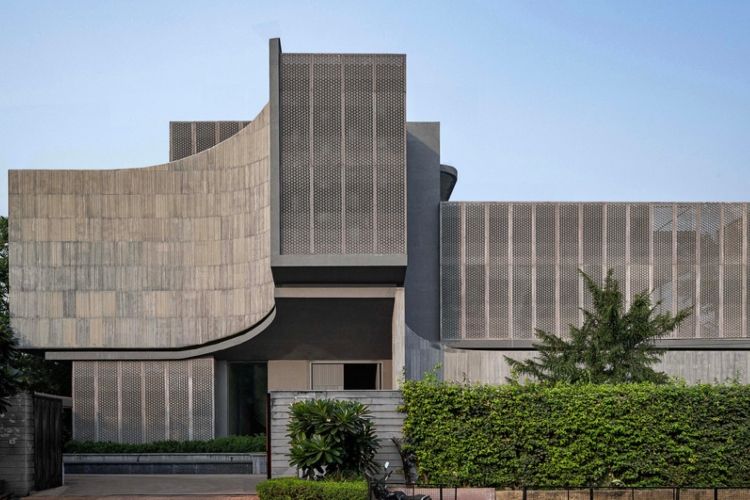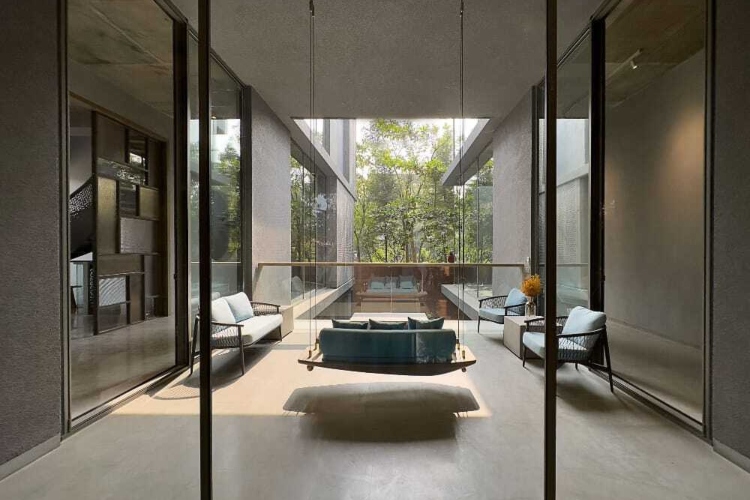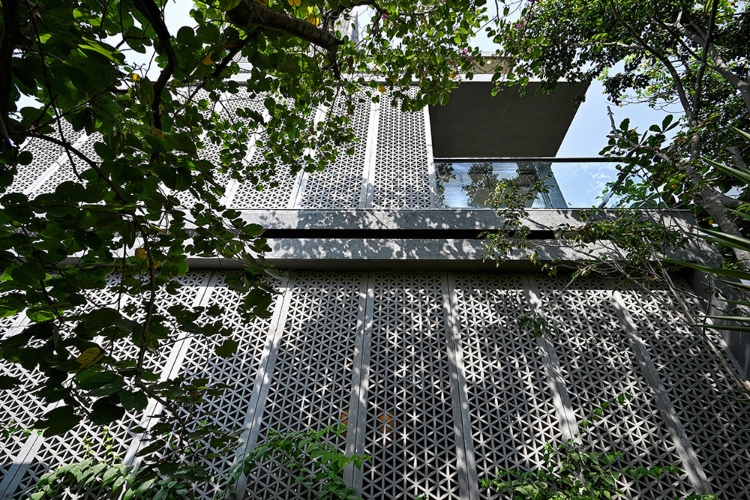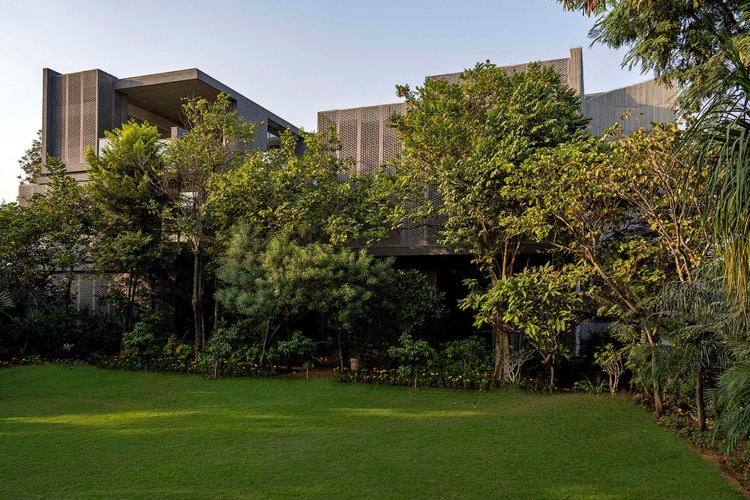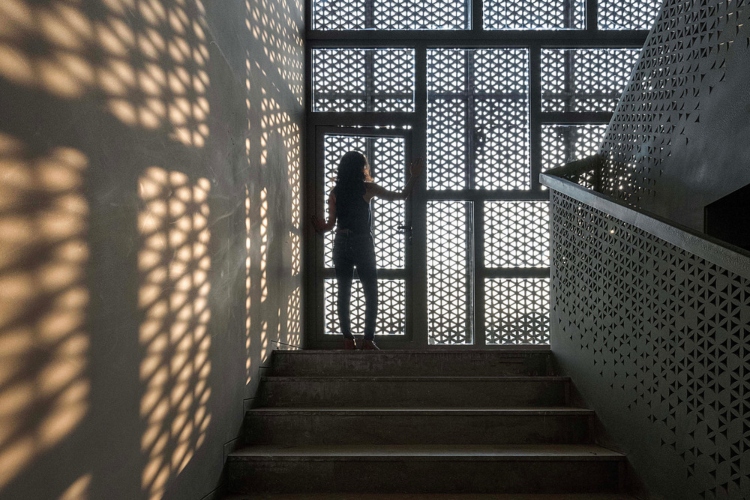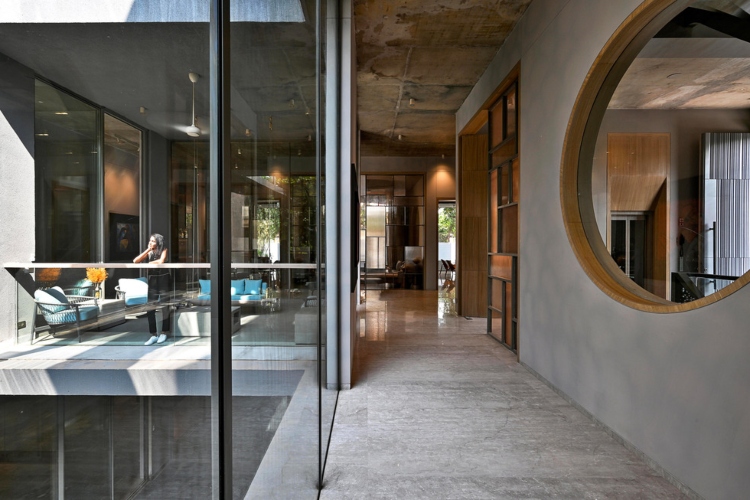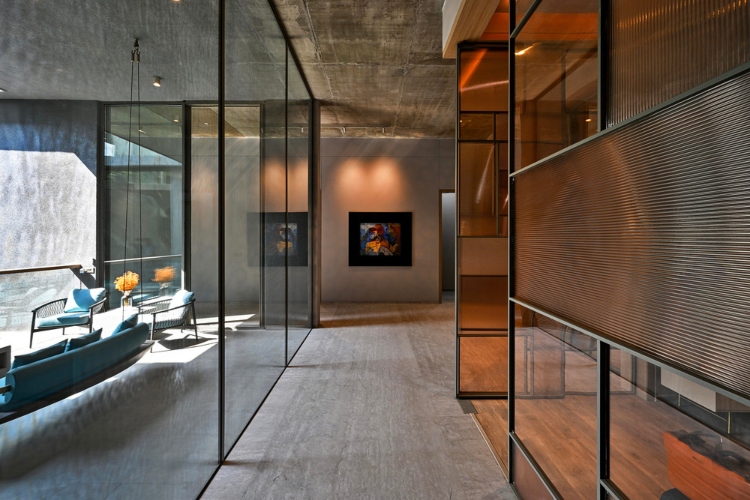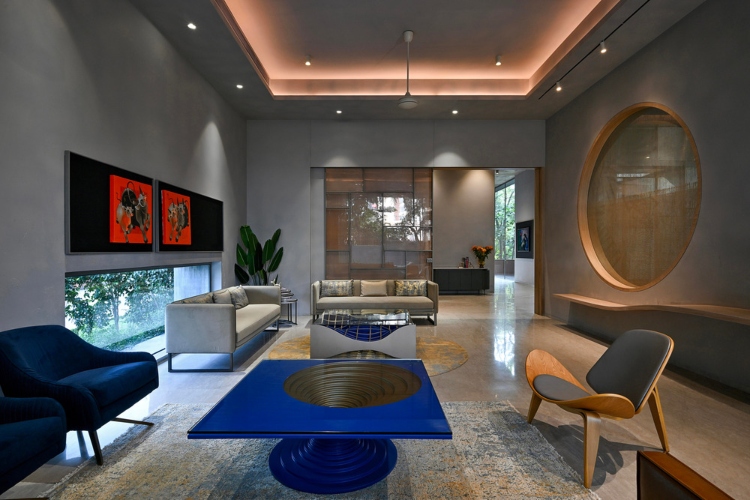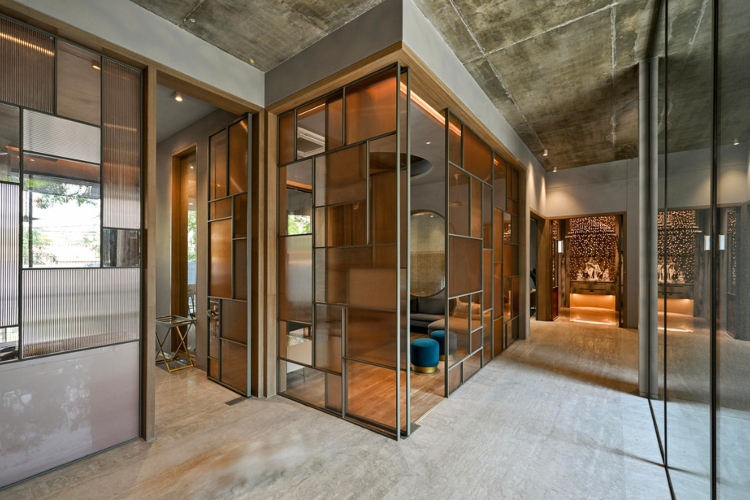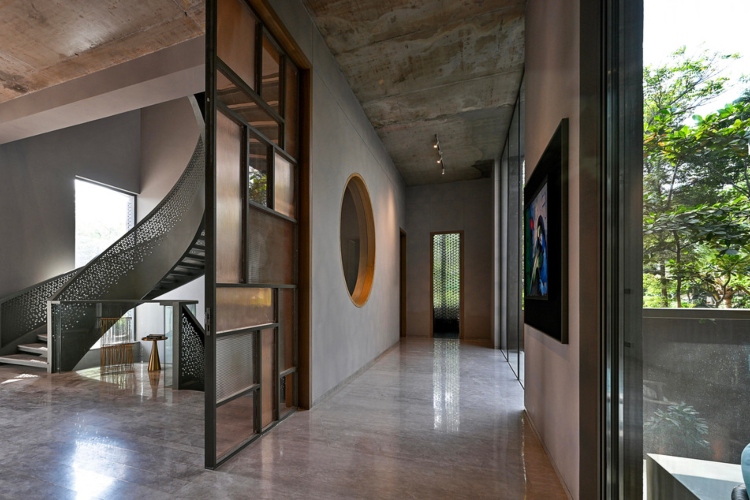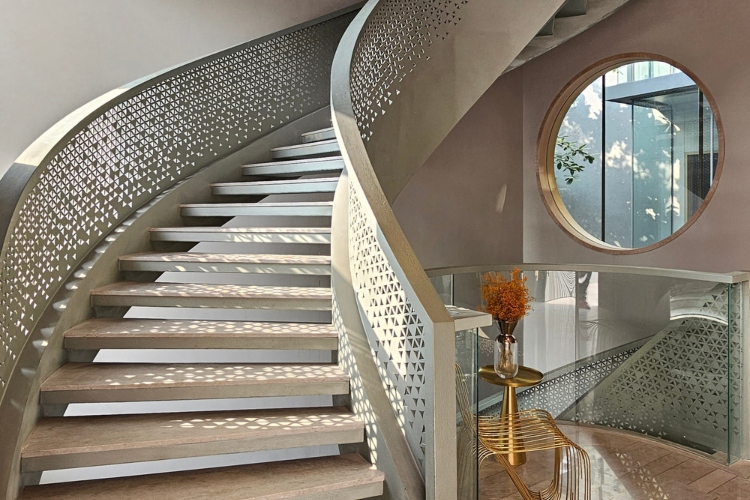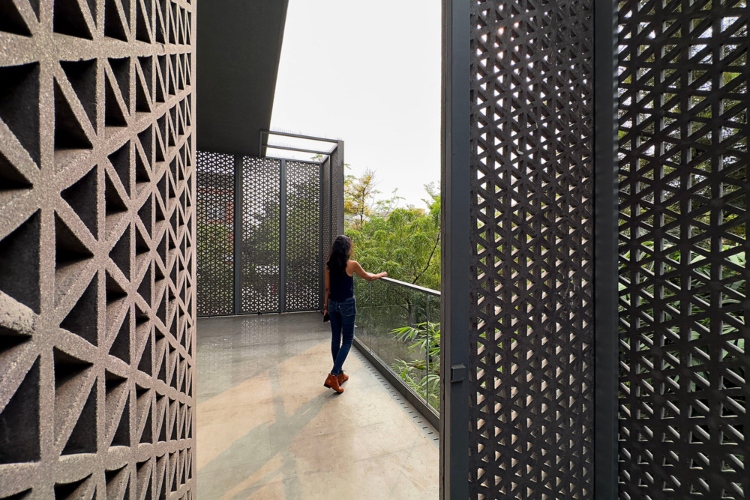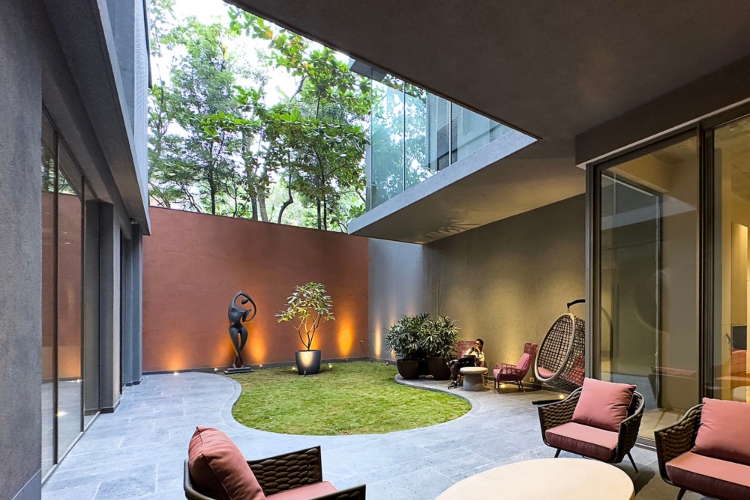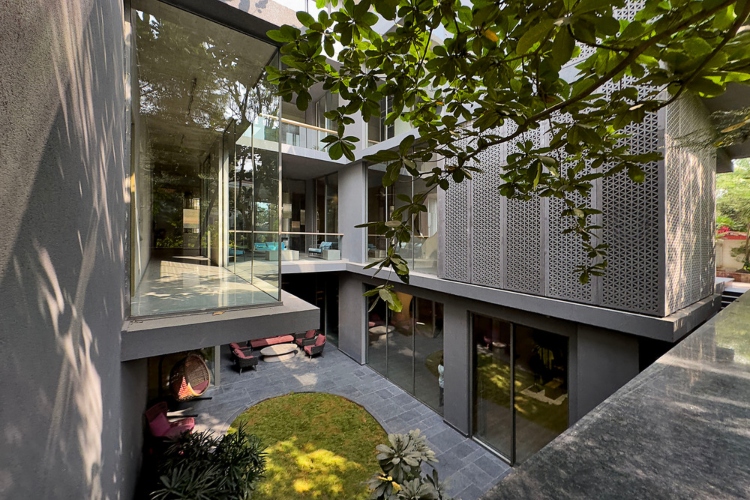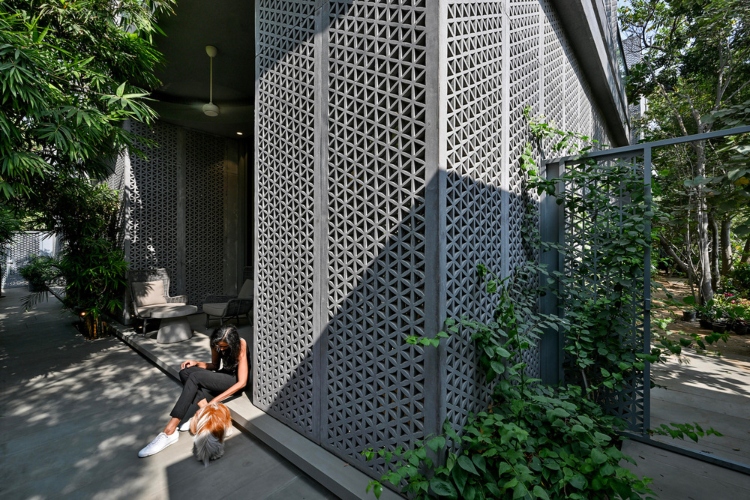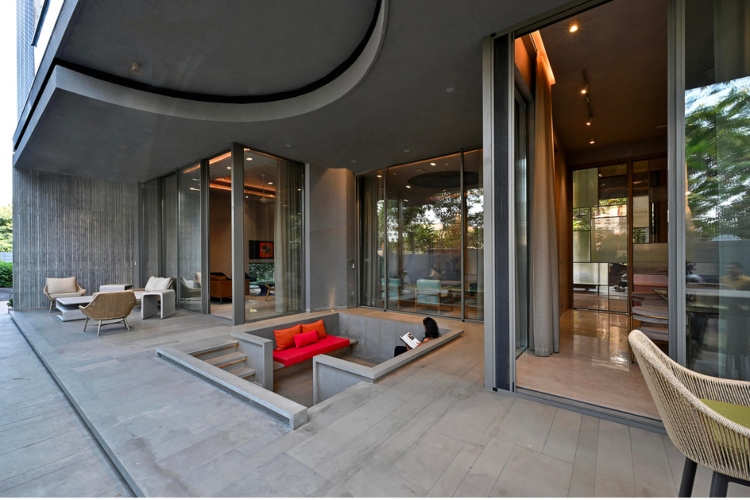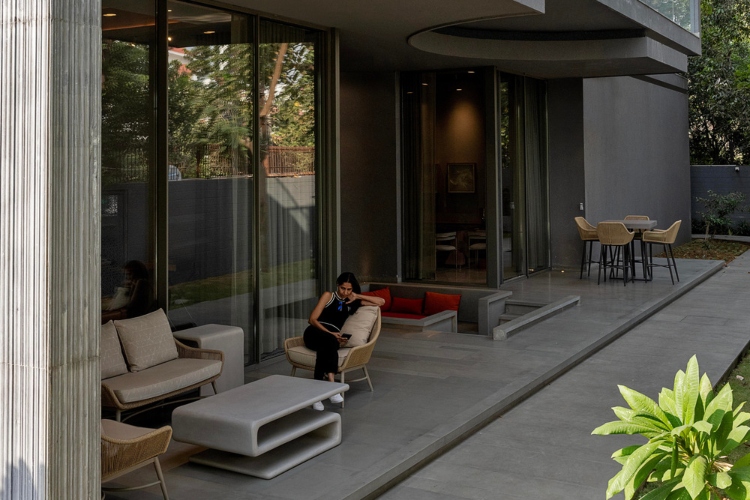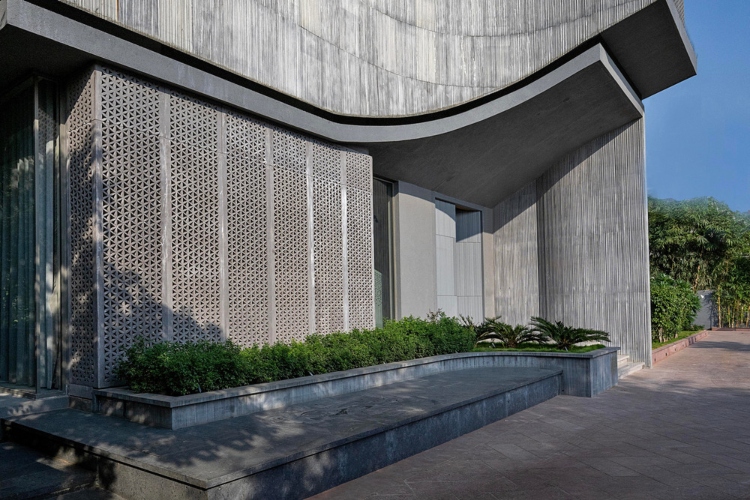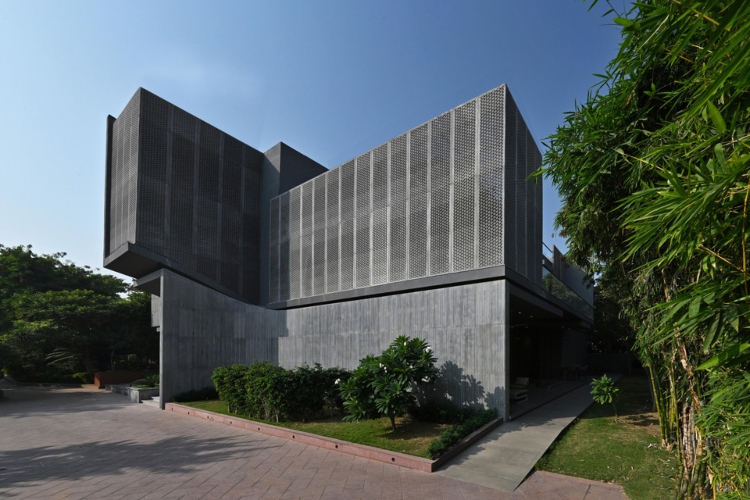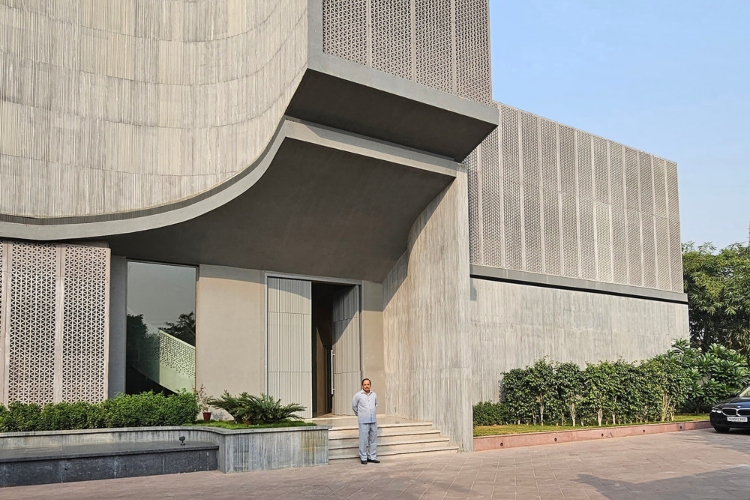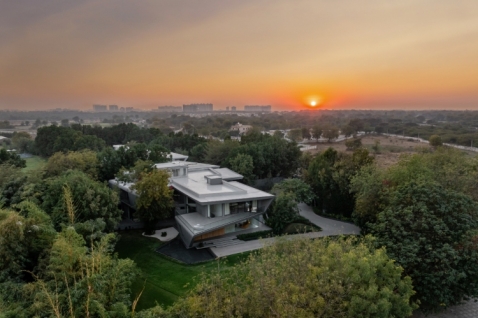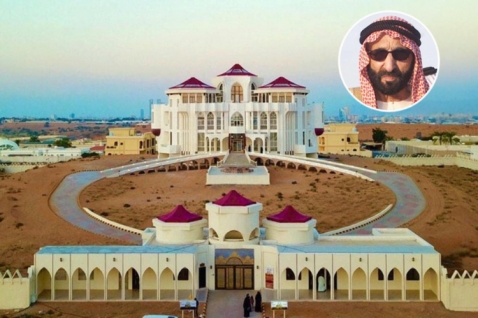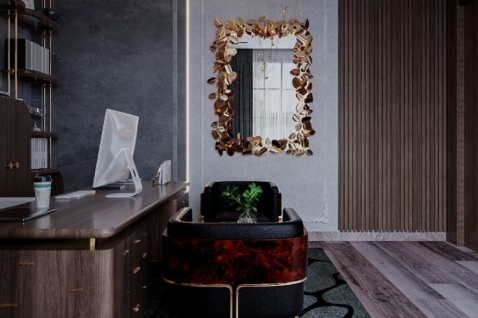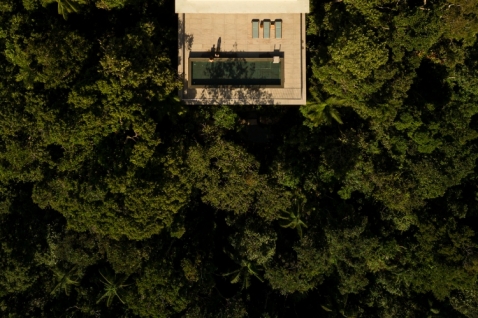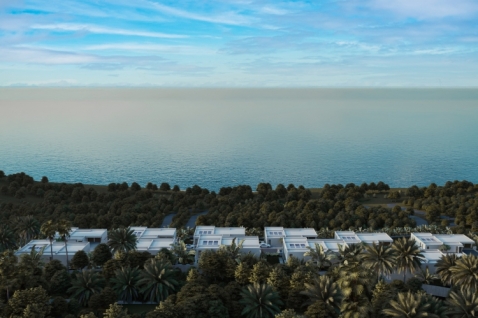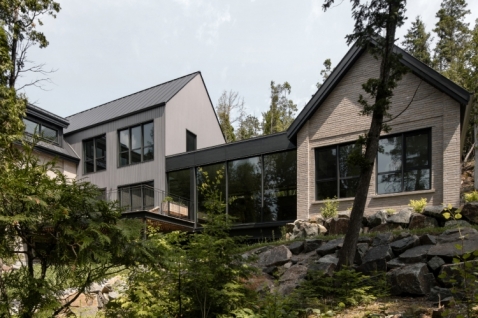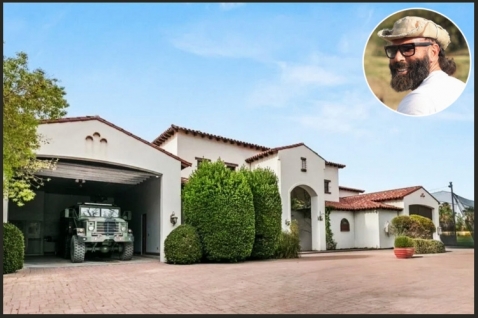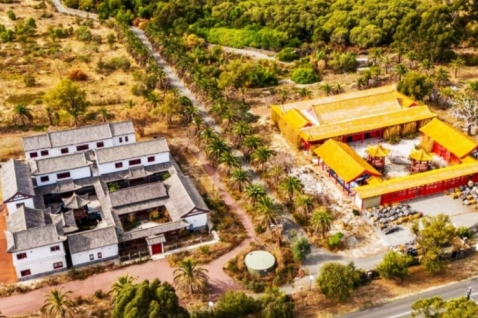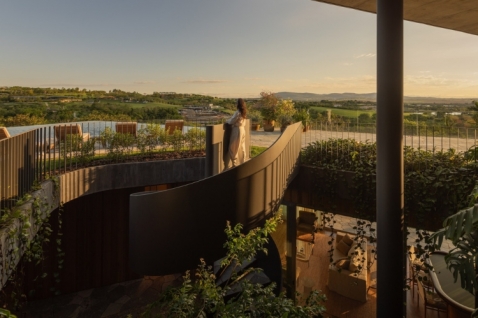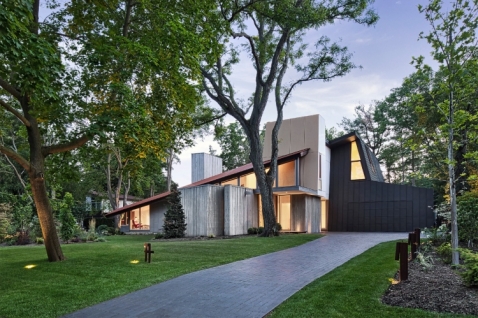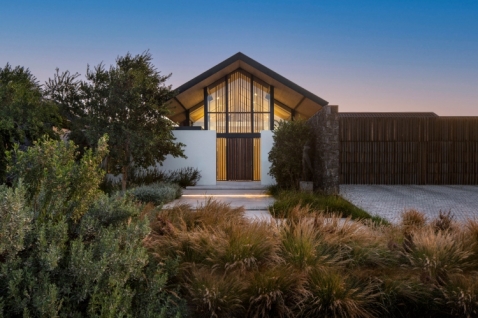More photos
Sanjay Puri Architects presents Zen Spaces, a 4-level, 27,000 sqft home located in Jaipur...
Blurring the lines between the interior and the exterior, Zen Spaces merges with the existing landscape, filtering light in various ways within each space, filling volumes with light and shadows that transform differently at different times.
Situated on a relatively large plot, with an existing house on the southern side, the clients wanted a new house as the family had grown larger. Keeping most of the existing garden as a common area for both houses, the new home is constructed at the far northern end, with roads on 3 sides. All existing trees on the site were preserved, with the new house nestled in the free space between them.
The house is a composition of cuboid volumes with an open courtyard, built on 4 levels to accommodate three generations living together.
A subterranean level, naturally lit through a sunken courtyard, contains a large lounge, a gym, and service areas. The ground floor and the first floor feature living and dining spaces, with three bedrooms and a small lounge on each level. The second floor contains a multipurpose room that opens onto a large terrace facing north.
Every part of the house is naturally lit, with diffused indirect sunlight permeating the inner volumes. The city of Jaipur experiences 8 months of summer with temperatures exceeding 35°C, and 4 months of winter with temperatures ranging between 12-21°C.
The house features a winter deck on the southern side facing the large garden, and a linear summer section extending in front of the main living and dining spaces on the northern end. The two decks provide sheltered outdoor seating, usable throughout the year for family gatherings.
Additionally, each room opens onto its own private outdoor deck or balcony, offering individual open spaces for everyone in the house. These outdoor decks act as a shelter from the excessive summer heat, while keeping the interior spaces cooler. The summer decks look out towards the large garden, and the winter deck faces large trees, with each of the individual opening onto a mix of bamboo and other trees.
To reduce heat gain during the summer months, while simultaneously providing privacy and reducing noise from the main road the house fronts, a series of GFRC screens cover the east, west, and south sides, with the north side being more open. These screens reference the traditional stone architecture of Jaipur city and Rajasthan.
The house has a simple RCC structural frame, with all walls made of bricks, including systems for water recycling, rainwater harvesting, and solar water heating. The house was constructed by local labor from the vicinity, and most materials used in its construction were sourced within a 100 km radius. Every part of the house is naturally ventilated, with the courtyard contributing to passive cooling.
The interior palette is predominantly neutral in shades of grey, with accents in the form of art and furniture. 80% of the furniture was custom-made on-site by local carpenters, and is made of Indowud, an eco-friendly wood substitute made from rice husks.
In most parts of the house, the ceiling is left as exposed concrete. A small prayer room forms a focal point along the circulation spine. This room, known as a "pooja room," is a small temple within the house and an essential part of most Indian homes. As all Hindu temples have a bell at the entrance, the prayer room in the house is adorned with a series of small bells in concentric circles of diminishing height, forming a dome shape echoing the traditional temple.
There are varying degrees of transparency throughout the inner spaces, with the living, lounge, dining, outdoor, and circulation spaces seamlessly integrated. Spaces are visible to an extent allowing for a richer spatial experience, yet simultaneously private. At night, the house partially lights up, displaying its solid and perforated volumes together in a sculptural manner. The design of the house, with its courtyard, screens, indirect natural light, and complete natural ventilation, makes it extremely energy efficient.
Contextual to the site location and the climate of the region, Zen Spaces is a home offering different experiences in each of its parts, seamlessly intertwining with nature.

